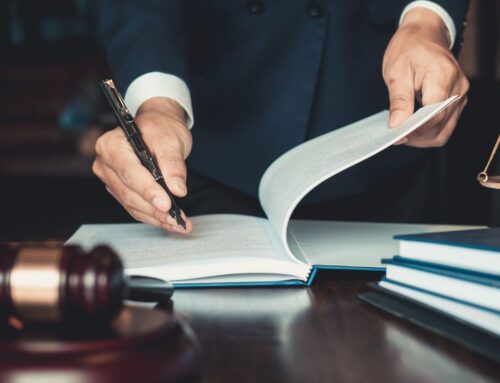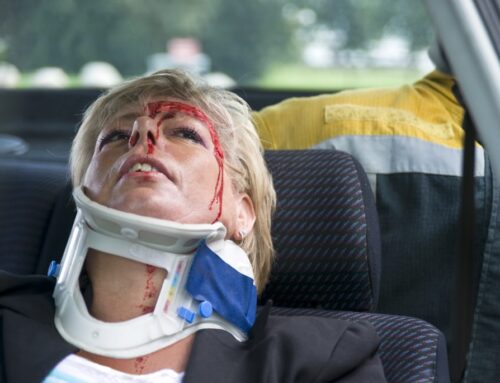Published by J.A. Davis & Associates – San Antonio Car Accident Attorneys
San Antonio’s Most Dangerous Intersections
San Antonio’s rapidly growing population and expanding road network have created numerous dangerous intersections where car accidents occur daily. From the busy corridors of Loop 1604 to the congested streets of downtown, intersection accidents represent some of the most serious and preventable crashes in our city. At J.A. Davis & Associates, we’ve represented countless victims of intersection accidents, helping them navigate the complex legal landscape while they focus on recovery.
Intersection accidents are particularly devastating because they often involve vehicles traveling at significant speeds from different directions, creating T-bone collisions, head-on crashes, and multi-vehicle pile-ups that cause severe injuries and fatalities.
Understanding Intersection Accident Dynamics
Intersections are inherently dangerous because they require multiple streams of traffic to cross paths in a controlled manner. When traffic control systems fail or drivers make poor decisions, the results can be catastrophic. San Antonio’s intersections present unique challenges due to heavy traffic volume, complex road designs, and rapid urban development that has outpaced infrastructure improvements.
The physics of intersection accidents makes them particularly severe. Unlike rear-end collisions, where vehicles are traveling in the same direction, intersection crashes involve vehicles with conflicting trajectories, often resulting in side-impact or angular collisions that transfer maximum force to vehicle occupants.
Common Causes of San Antonio Intersection Accidents
Red light running remains the leading cause of intersection accidents in San Antonio. Drivers rushing to beat changing lights often misjudge timing, entering intersections after lights have turned red. This behavior is particularly common during rush hour periods when traffic congestion creates pressure to keep moving.
Failure to yield the right-of-way causes numerous accidents, especially at intersections with complex turning patterns. Many San Antonio intersections have multiple turn lanes, dedicated turning signals, and yield-on-green situations that confuse drivers unfamiliar with local traffic patterns.
Distracted driving significantly contributes to intersection accidents. Drivers texting, talking on phones, or engaging with in-vehicle entertainment systems often miss traffic signals, fail to notice changing conditions, or don’t see pedestrians and cyclists in crosswalks.
Left-turn accidents occur frequently when drivers attempt to turn across oncoming traffic. Misjudging the speed and distance of approaching vehicles, especially during low-light conditions or bad weather, leads to devastating T-bone collisions.
Speeding through intersections reduces reaction time and increases crash severity. Drivers approaching intersections at excessive speeds cannot stop safely when lights change or unexpected situations develop.
High-Risk San Antonio Intersections
Several San Antonio intersections have gained notoriety for frequent accidents. The intersection of Loop 1604 and Interstate 35 North experiences a high number of crashes due to its high traffic volume and complex merging patterns. Multiple lanes of traffic, frequent lane changes, and varying speed limits create dangerous conditions.
Downtown intersections like Commerce Street and Navarro Street present unique challenges with heavy pedestrian traffic, one-way streets, and frequent delivery vehicles. Tourist traffic, unfamiliar with local street patterns, adds additional risk factors.
The intersection of Bandera Road and Loop 1604 West has seen numerous serious accidents, particularly during peak traffic hours. The combination of commercial development, multiple turn lanes, and heavy traffic volume creates hazardous conditions.
Suburban intersections in rapidly developing areas often lack adequate traffic control infrastructure. New shopping centers and residential developments increase traffic volume faster than signal timing and road design can accommodate.
Types of Intersection Accidents
T-bone or side-impact collisions are among the most dangerous intersection accidents. These crashes occur when one vehicle strikes another vehicle’s side, often causing severe injuries to occupants on the impact side. The side of vehicles provides less protection than the front or rear crumple zones.
Head-on collisions can occur at intersections when vehicles turn into oncoming traffic or when traffic control systems malfunction. These accidents are often fatal due to the combined speed of both vehicles at impact.
Rear-end collisions happen when drivers fail to stop for red lights or stop signs, striking vehicles already stopped at intersections. While often less severe than other intersection crashes, rear-end collisions can still cause significant injuries, particularly whiplash and back injuries.
Multi-vehicle accidents occur when initial crashes block intersection traffic, leading to secondary collisions. These complex accidents often involve multiple liable parties and complicated insurance claims.
Pedestrian and Cyclist Risks
San Antonio’s intersections pose significant risks to pedestrians and cyclists. Many intersections lack adequate crosswalk signals, forcing pedestrians to navigate complex traffic patterns without clear guidance. Right-turn-on-red traffic laws create conflicts between turning vehicles and pedestrians crossing legally.
Cyclists face particular dangers at intersections where bike lanes end or merge with vehicle traffic. Drivers often fail to check for cyclists when turning, leading to serious accidents.
Downtown intersections with heavy foot traffic from tourists and workers create additional complexity. Drivers focused on navigating unfamiliar streets may not notice pedestrians in crosswalks.
Weather-Related Intersection Dangers
San Antonio’s occasional severe weather creates additional intersection hazards. Heavy rain reduces visibility and creates slippery conditions that increase stopping distances. Flash flooding can make intersections impassable, forcing drivers to make dangerous decisions about proceeding through standing water.
Fog, while less common, can severely reduce visibility at intersections, making it difficult for drivers to see traffic signals and other vehicles.
Strong winds from thunderstorms can affect vehicle control, particularly for high-profile vehicles like trucks and SUVs navigating intersections.
Legal Implications of Intersection Accidents
Determining fault in intersection accidents requires careful analysis of traffic laws, witness statements, and physical evidence. Texas traffic laws clearly define right-of-way rules, but applying these rules to complex intersection scenarios often requires legal expertise.
Red light violations are typically clear-cut liability situations, but proving when a light changed requires evidence from traffic cameras, witness testimony, or accident reconstruction analysis.
Comparative negligence laws in Texas mean that even partially at-fault drivers may recover damages, but their compensation is reduced by the percentage of fault attributed to them.
Technology and Intersection Safety
Red light cameras at some San Antonio intersections have reduced violation rates, but controversy surrounds their use and effectiveness. These systems can provide valuable evidence in accident cases, but have faced legal challenges regarding implementation.
Modern intersection design incorporates roundabouts, which have proven safer than traditional signal-controlled intersections. However, driver unfamiliarity with roundabout navigation can create new types of accidents.
Smart traffic signals that adjust timing based on traffic flow are being implemented in some areas, potentially reducing accidents caused by poor signal timing.
Preventing Intersection Accidents
Defensive driving techniques are essential for intersection safety. Drivers should approach intersections with increased caution, even when they have the right-of-way. Looking both ways before proceeding through green lights can prevent accidents caused by red light runners.
Maintaining safe following distances allows adequate stopping time when traffic signals change unexpectedly. This is particularly important during heavy traffic periods when sudden stops are common.
Avoiding distractions when approaching intersections helps drivers notice changing traffic conditions and respond appropriately to unexpected situations.
When Accidents Happen
If you’re involved in an intersection accident, immediate steps include ensuring safety, calling 911, and documenting the scene. Taking photographs of vehicle positions, traffic signals, and intersection layouts provides valuable evidence for insurance claims and legal proceedings.
Seeking medical attention is crucial, even for seemingly minor injuries. Adrenaline can mask injury symptoms that become apparent hours or days later.
Contacting experienced legal representation protects your rights and ensures proper investigation of the accident. Insurance companies often attempt to minimize claims, particularly in complex intersection accidents with disputed liability.
Why Choose J.A. Davis & Associates
Our San Antonio car accident attorneys understand the complexities of intersection accident cases. We investigate thoroughly, working with accident reconstruction experts to determine fault and maximize compensation for our clients.
We handle all aspects of intersection accident cases, from dealing with insurance companies to presenting cases in court when necessary. Our goal is to secure full compensation for medical expenses, lost wages, and pain and suffering while our clients focus on recovery.
Contact J.A. Davis & Associates today at (210) 732-1062 for a free consultation about your intersection accident case.





[…] post Intersection Accidents in San Antonio appeared first on J.A. Davis & Associates […]